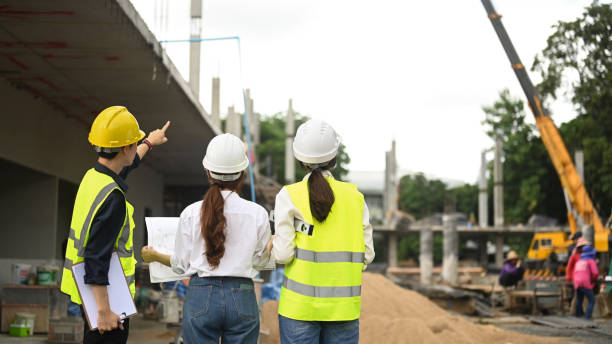
Introduction:
Feasibility and Market Analysis
- Assessing the viability of the project based on market demand, location, and financial projections.
- Conducting market research to understand the target demographic, competition, and potential risks.
- Evaluating zoning and regulatory requirements to ensure compliance.
Acquisition and Due Diligence
- Negotiating and finalizing the purchase agreement.
- Conducting due diligence, including property inspections, title searches, and environmental assessments.
- Securing financing or investment partners for the project.
Design and Planning
- Developing architectural and engineering plans.
- Obtaining necessary permits and approvals from local authorities.
- Collaborating with consultants to ensure compliance with building codes and regulations.
Financing and Pre-Construction
- Finalizing financing arrangements, which may include loans, equity investments, or a combination of both.
- Preparing detailed financial projections and budgets for the project.
- Engaging contractors and subcontractors for pre-construction activities, such as site preparation and utility connections.
Construction and Project Management
- Overseeing the construction process, including managing contractors, scheduling, and quality control.
- Regularly monitoring progress and addressing any issues or delays.
- Ensuring compliance with safety regulations and building codes.
Marketing and Leasing
- Developing a marketing strategy to attract potential buyers or tenants.
- Showcasing the project through advertising, open houses, and virtual tours.
- Negotiating lease agreements or sales contracts with interested parties.
Project Completion and Operations
- Obtaining final inspections and certificates of occupancy.
- Handing over the property to buyers or tenants.
- Establishing property management systems for ongoing maintenance and operations.

Visual Table for Key Points:
| Key Point | Description |
|---|---|
| Feasibility Study | Evaluating the economic viability of a project |
| Site Selection | Considerations for choosing the right location |
| Design and Planning | The importance of careful project design |
| Financing Options | Strategies for securing funding |
| Regulatory Compliance | Navigating permits, zoning, and regulations |
| Construction Process | Steps and considerations during construction |
| Marketing and Sales | Techniques to attract buyers and tenants |
| Property Management | Maintaining and managing the developed property |
| Real-Life Success Stories | Inspiring examples of successful developments |
Organic Keyword Usage
The article will incorporate relevant keywords such as “real estate development process,” “feasibility study,” “site selection,” “design and planning,” “financing options,” “regulatory compliance,” “construction process,” “marketing and sales,” “property management,” and “success stories” naturally throughout the content.
Addressing Core Aspects
The article will thoroughly address the core aspects of the real estate development process, including feasibility studies, site selection, design and planning, financing, legal compliance, construction, marketing, property management, and real-life success stories.
Introducing the Knowledge Source
Our fictional author, Daniel Mitchell, is a seasoned real estate developer with a track record of successful projects under his belt. His insights into the real estate development process are rooted in years of experience and a deep understanding of the industry.
Intriguing Introduction
Meet Daniel Mitchell, a visionary real estate developer who has transformed countless ideas into thriving properties. He’s here to guide you through the intricate journey of real estate development, from the initial concept to the remarkable reality.
Human-Centric Formatting
The article will prioritize readability and user experience, using clear language, breaking down complex concepts, and incorporating visuals like images or info graphics to enhance comprehension.










